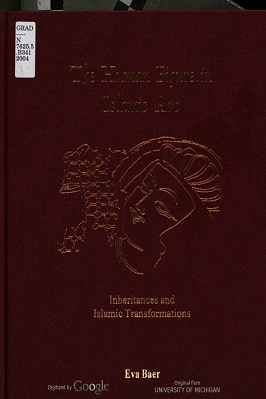
| The Human Figure In Islamic Art Inheritances And Islamic Transformations |
| Eva Baer |
| 109 |
| |
| PDF Direct Download Link |
| Click for Hard Copy from Amazon |
The Human Figure in Islamic Art Inheritances and Islamic Transformations Eva Baer
THE HUMAN FIGURE IN ISLAMIC ART INHERITANCES AND ISLAMIC TRANSFORMATIONS
Book Contents
- Acknowledgments
- List of Figures and Color Plates
- Photographic Credits
- Introduction
- The Arab World
- The Human Image in Early Islamic Art I
- The Fatimid Melting Pot
- Between East and West.
- The Umayyad Caliphate and the Ta’ifas
- Mesopotamian Types and their Decline
- The Persian World
- The Figure in the Round
- Painted Figures and the Mongols
- Timurid Concepts
- Safavid Highlights
- Further Europeanizing Tendencies: Zand and Qajar Images
- From Penia to India: The Mapal Period
- From Akbar toJahangir
- Painting Under Jahangir and hisSuccessors
- The Haman Figare in Tarkuh Art S
- Pre-Ottoman Depictions
- TheOttoman Image
- The Qaestion of Portraitare ia Islamic Art S
- Concluding Remarks
- Select Bibliography
- Illustrations
Book Introduction
Notwithstanding the predilection of Muslim artists for abstract designs and the tendency to stress the decorative elements of a picture or its illusory character, literary texts and visual sources quite early re veal a concern with figural art. Evidently the Islamic concept of the human image diverges basically &om modem ideas. Different periods and areas did not have the same standards or ideas about such representations which, linked in form and content to the societies for which they were created, are not a faithful record of what is actually seen and experienced.
The present study attempts to study the development of the human figure in the arts of Islam.
It begins in Syria, Mesopotamia and Egypt in the later seventh century, and ends with the Safavid dynasty in Iran and Central Asia and the Qajar period in the nineteenth century. As to India. only the Mughal period is included.
On the whole we shall progress chronologically, and base ourselves primarily on the observation of paintings, drawings and sculptures, whether in architectural decoration or the minor arts.
At the same time, we will keep in mind historical developments, representations based on conventions and other circumstances leading to new styles or iconography, and ask ourselves how these images might have been understood at the time they were created.
To read more about the The Human Figure In Islamic Art Inheritances And Islamic Transformations book Click the download button below to get it for free
or
Report broken link
Support this Website
for websites